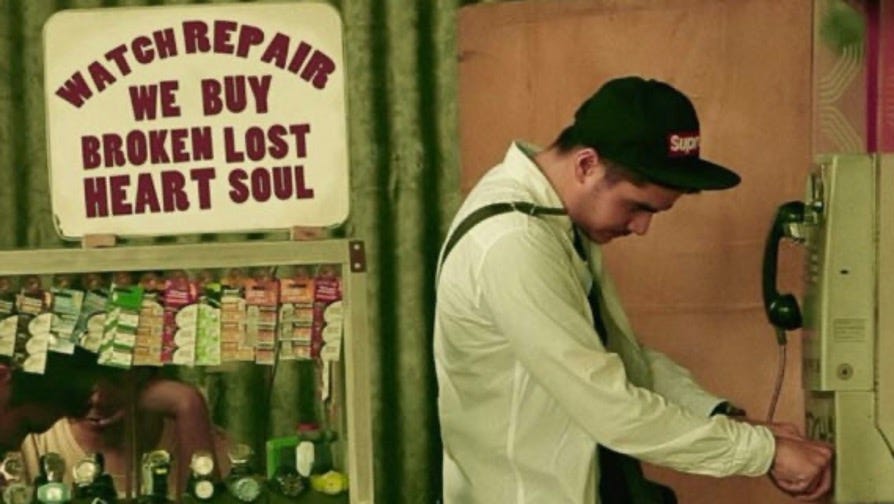Here and elsewhere: Reflections on a Philippine regional cinema in flux
This essay is part of my Arts Equator fellowship. A version of this essay has been published at eksenrika.com.
1
A short film opens with a shot from the point of view of a ship deck. The sea is gray but the sun is rising on the horizon. The waves wobble but not worrisome. In fact, it might be a usual thing to wake up to for seafarers already deep into this unknown, unnamed ocean.
The film is called Layag. After placing us in an unidentifiable territory, it proceeds to detail the morning ritual and work of a Filipino seafarer, whose southern origin is revealed through disembodied conversations of his family in the Bisaya language. This visual diary, assembled by Zarlie Cacho from the intimate recordings of her brother Mark Gil, gains an emotional resonance. Filmed during the pandemic, there is the looming uncertainty of coming home amid heightened restrictions.

The word layag could mean two related things: it is a verb which means to sail—a maritime voyage; it also refers to the canvas attached to the boat which makes it sail. The documentary reminds us of the voyage thousands of Filipino seafarers—the Philippines’ largest labor export to the world—make every year. So huge is this market that around 400,000 have been deployed in 2022 alone.1
Interestingly, Layag is a fitting film in the morning program of the final day of Cinema Rehiyon, an annual ‘traveling’ film exhibition that showcases around a hundred films, predominantly short films, from all over the Philippines, grouped into the major island-regions of Luzon, Visayas and Mindanao, and including recently, films from the National Capital Region or NCR.
This year, the festival under the National Commission for Culture and the Arts (NCCA) is in its 16th year.2 The screenings happened in a 70-seater mini-theater called Cinema Exmundo (or at the open air grounds outside at night), within the University of the Philippines Iloilo City campus in the Western Visayas region.
The Mindanao short documentaries program also showed Sheila Tomaquin’s Kasubo-Kalipay, an emotional journey similar to Cacho’s Layag, told with the Covid-19 pandemic as the backdrop. Like its title, which means “sorrow-joy”, intimating the intertwining of both emotions, it is a straightforward account of a reunion between a mother and her children in Dubai.
In the documentary, Tomaquin and her brother struggle to obtain the necessary travel documents to travel abroad, with the mother’s financial challenge to get them and the threat of Covid infection, complicating things. All of these happen in the film’s 15-minute runtime. Like Layag, the film’s footage are from smartphone recordings. Tomaquin’s coverage is sufficient enough to assemble it as if it is a plot-driven fictional narrative.
Cacho and Tomaquin are batchmates in a communication undergraduate course from Ramon Magsaysay Memorial College in General Santos, a city in Mindanao where maritime and fishing activities abound. They take the subjectivities of their hometown while reflecting on their own experiences of labor and migration. Their specific geography dissolves into the liminal zones of airports and sea pathways, sites that are an unusual domain of regional films, where rootedness and affinities to a place and its culture is celebrated.
2
The day before, a program of Visayas and Mindanao comedy shorts, including Zamboanga-born Aedrian Araojo’s absurdist bestial tale Animal Lovers (2023), which won last year’s QCinema Shorts competition, and young Davaoeño filmmakers Jermaine Tulbo’s raucous dysfunctional family in Ang Pamilya Maguol (The Mourning Family, 2023), and Franky Arrocena’s life-in-the-streets comedy Ang Maniniyot ni Papa Jisos (Papa Jisos’ Photographer, 2024).
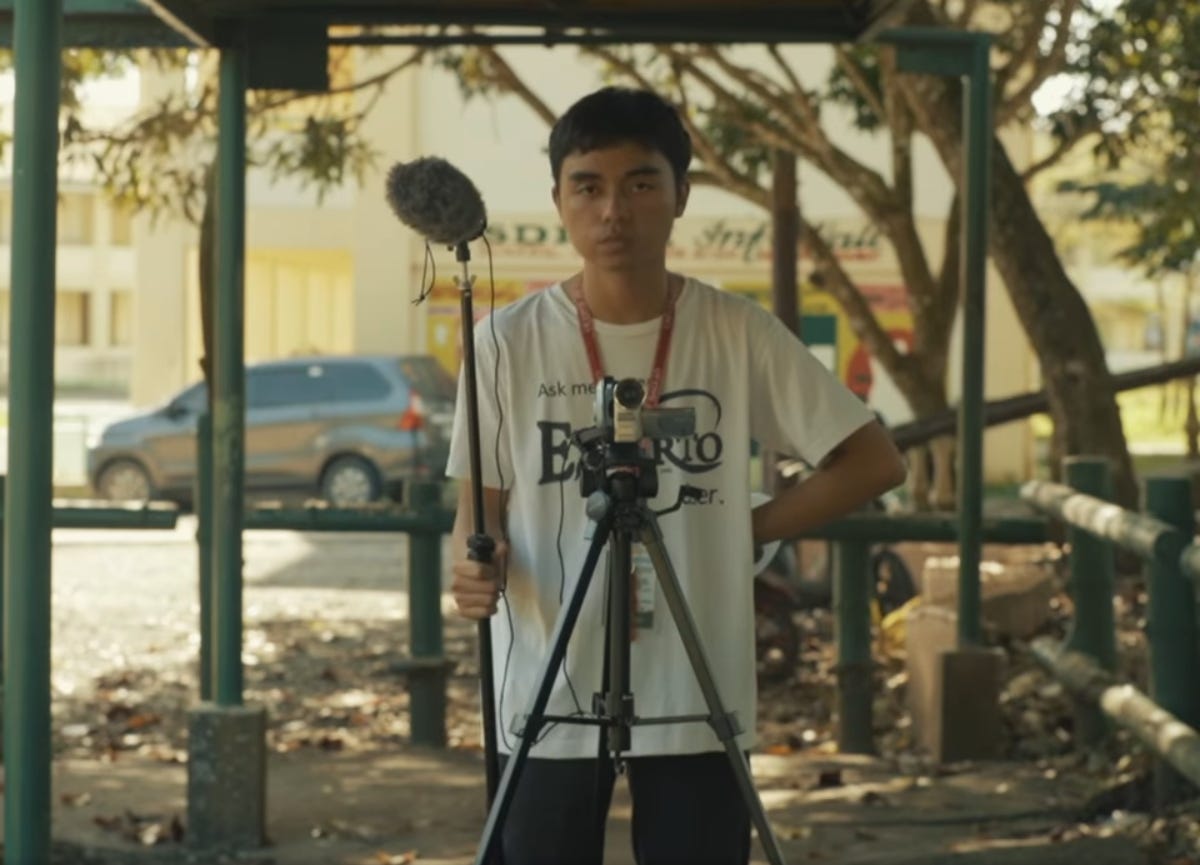
But the one that caught my attention was Ambot Wala Ko Kabalo Unsay Title Ani (2024) by Rey Villaverde from Dipolog, a city in Northwestern Mindanao. His sophomore film is a playful DIY guide to making your first film, which captures the youthful exuberance of his first short Tingog3 which was in Cinema Rehiyon last year, and which he made when he was in Grade 11. They call their film production group at school Layag Studios.
According to Cinema Rehiyon programmer, the writer and filmmaker Teng Mangansakan, it is worth noting how comedy short submissions from Mindanao were dominant. This statement probably comes off from the expectation that films coming from Mindanao always tackle “serious” subjects like conflict and war.
Nothing comes close to mind when I think of a Mindanao comedy film but Charliebebs Gohetia’s The Thank You Girls (2008), a full-length road-trip film about gay beauty pageant hopefuls who travel the long stretch of the Davao-Bukidnon highway.
3
While in Iloilo for Cinema Rehiyon, it is unavoidable not to think of Anthony Chen’s Ilo Ilo (2013). A fictional account of his childhood, and a generation of Singaporean children raised by Filipina nannies, around the time of the Asian financial crisis. Ilo Ilo is a strange word—and world—for Chen who hears it from her nanny, detached from his own reality, but one that eventually found its way into a film about migrant laborers.
The film’s story took a dramatic turn when Chen found his real-life nanny, Teresa, whom his family had not seen for 15 years. He brought her as a special guest to the film’s Singapore gala premiere following a publicized search.4
Recent OFW (Overseas Filipino Workers) films include Lorcan Finnegan’s Nocebo (2022) and Paris Zarcilla’s Raging Grace (2023), both starring Filipina actresses in the role of caretakers. Nocebo is a co-production from opposite cultural hemispheres that plays the fusion-vs-tension elements interestingly in a folklore-horror revenge narrative.
The story of the OFW, often told in mainstream Filipino films, occupies national relevance, and thus, serves as a unifying narrative of Filipino diaspora and displacement. The narrative of ‘pakikipagsapalaran’ —a Tagalog term that connotes both adventure and risk of a voyage away from one’s homeland—continues to portray these roles of Filipinos taking a jab at fate, reflective of the global capitalist market that exploits cheap labor from “developing” Southeast Asian countries.
4
I once spoke of the possibility of moving to Manila to pursue further studies related to film, to which I was told, with a slight inflection of warning, that I might be ‘uprooted’. Rootedness. The primacy of and affinity to place, its culture, languages, realities, and the various attachments and belongingness attributed to a specific locality.
When I think about rootedness, I think of the kind of cinema cultivated by the film community in Nabunturan, a landlocked town in the province of Davao de Oro. It was founded ten years ago, taking off from an NCCA-supported film workshop and initiated by its founding festival director Atty. Karen Malaki, a Nabunturan native and film enthusiast who happens to be the municipal administrator of the local government at the time.
The organizers wanted to have a feel of a film festival and since there were no theaters in the town, the film workshop outputs were screened al-fresco at the municipal plaza.
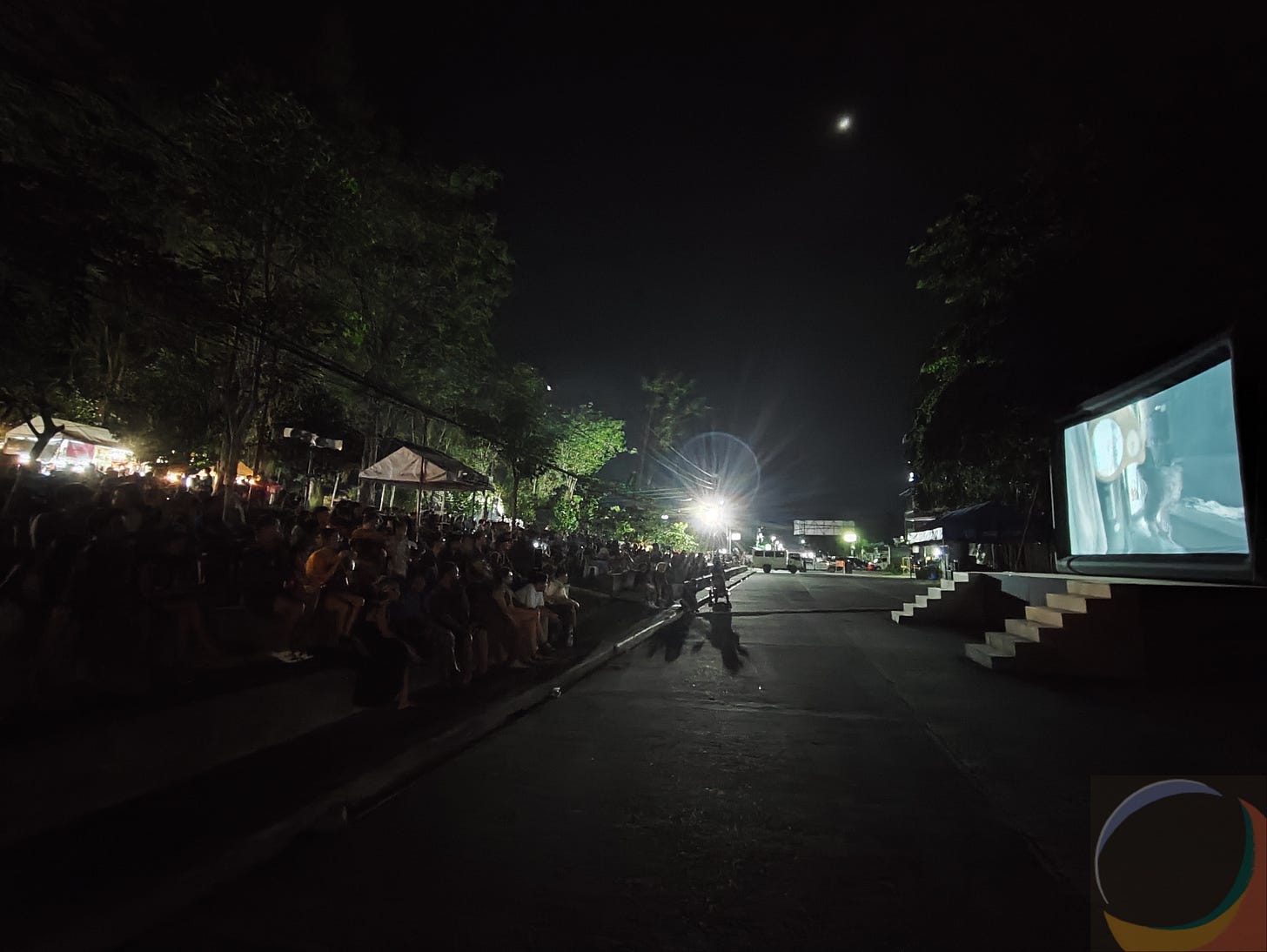
Two years later, the Open Air Cinema initiative reached out to them and donated a 20-foot inflatable projector screen. Returning with physical screenings last year after the pandemic, the staple feature of the annual Nabunturan Independent Film Exhibition (NABIFILMEX) still stands, gathering the townsfolk in the annual communal experience, even with the recent construction of their Cinematheque.
Nabifilmex’s example offers an opportunity both as an alternative mode of film spectatorship (not even ‘new’ because it harkens back to a time when malls and commercial cinemas have not usurped the filmgoing experience) and distribution model for independent, non-mainstream films.
But the films that make an impression are those that are made by their homegrown filmmakers—young students, some who started as young as 15, local government staff, and public school teachers—who crafted stories with a distinct commentary on social realities and issues they face.
From the toll of the mining industry to the people5, the intrusion of modern technology among the youth, and relatable relationship dramas that draw on familial and community experiences, Nabifilmex films collectively present a regional cinema where the distinction of place and its realities resonate the strongest.
5
During the 2017 Salamindanaw Asian Film Festival (based in General Santos City), panelists talked about aesthetics in regional films and arrived at the same problematique in every forum, essay, or post-screening discussion that attempts to theorize the regional new wave in Philippine cinema. There was an inclination to redefine, or find a less amorphous term, to replace regional with peripheral.
But where, or what, is a clearly delineated periphery, if, as Ryan Lim writing for Asian Film Archive, posits that, “cinema is a moving center”… an industry that “booms and busts”, a history that “speaks of avant gardes followed by main flanks.6 A region also has its own center and creates its own peripheries. A perpetual movement of inclusion and exclusion, expanding and limiting.
As an active drawing away from the center, peripheral makes sense. A de-centering, or a decentralization, that also mirrors the governmental act of the Philippines’ regionalization7, spurred by a presidential decree under the late dictator Ferdinand Marcos—three days after the country was placed under Martial Law—in what could be a consolidation of power through fragmentation in the guise of inclusive development.
Five decades after, the dictator’s son Ferdinand Marcos Jr. is now in power, and this promulgation of a decentralized country has only brought with it violence, poverty, a lingering distrust, and continued division in many fronts. And yet, token regional pride abounds.
Film scholars and writers see regional cinema a bridge, the regions as the “missing parts… to a nation in progress”8, a response to historical errors of representation reified in cinematic imagery, and more specifically, Mindanao as the “more illuminating place to begin decentering, reorienting, and interrogating Philippine (film) history.”9
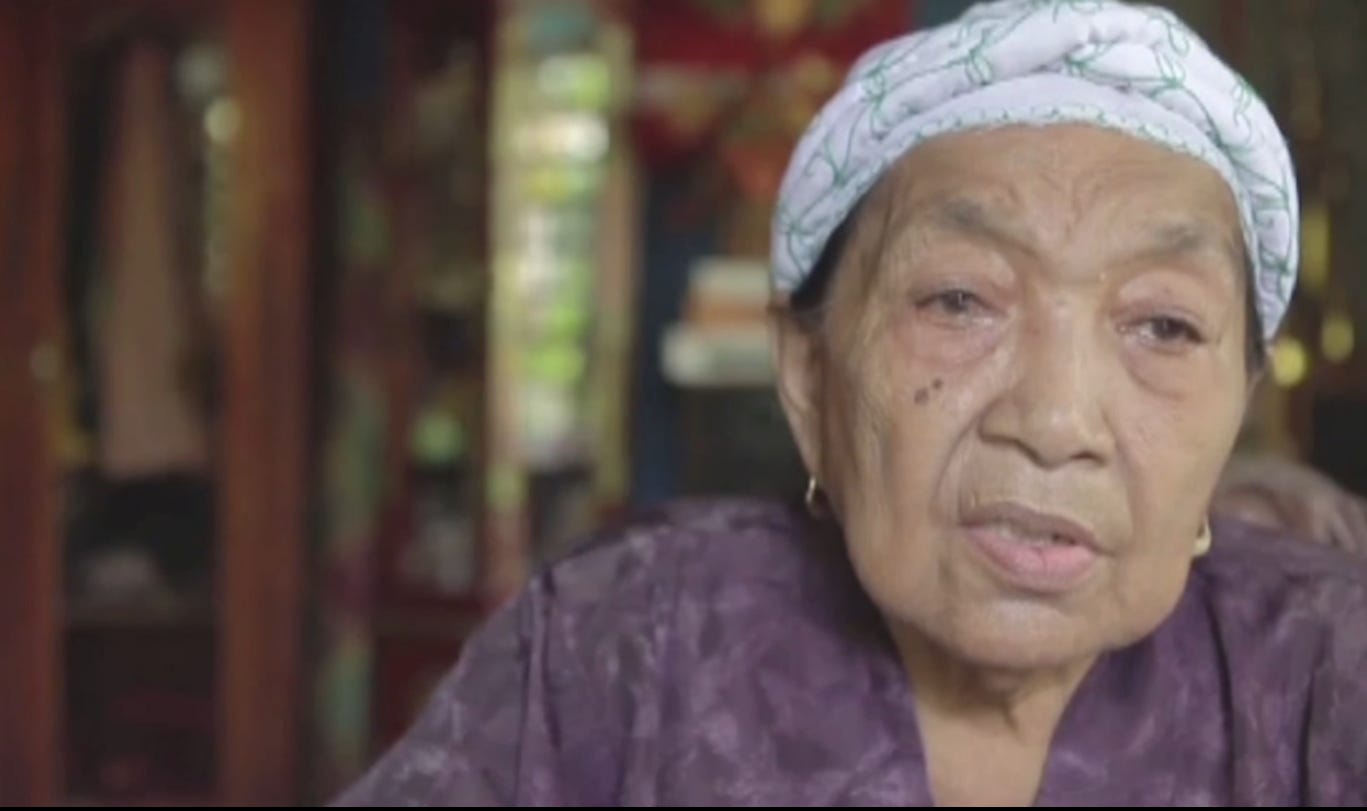
Mangansakan’s documentary Forbidden Memory (2016) is a recollection of the Malisbong massacre in the Mindanao province of Sultan Kudarat during Martial Law, a topic not widely talked about in Mindanao history. The survivors’ horrific accounts directly counters the claims that there were no atrocities during that time in Mindanao made by then-president Rodrigo Duterte who authorized the burial of the former dictator in the Libingan ng mga Bayani (heroes’ cemetery).10
But not only of history—I think of the corrective nature of regional cinema as a re-imagining of cinematic space. Arnel Barbarona’s Tu Pug Imatuy (The Right to Kill, 2017) challenges our postcard view of the Mindanao landscape (or any rural landscape) by laying bare the violence of the state and capitalist development aggression that happens within ancestral lands that led to the displacement and disenfranchisement of indigenous peoples.
On one hand, while Bagane Fiola’s (re)presentation of the forest in Baboy Halas (Wailings in the Forest, 2016) invites foreign exoticization, the film ends with the tension caused by a new or shifting world, in which the same foreign-ness threatens the harmony of indigenous space.
6
The Alternative Cinema Initiatives Conference in 2019, conducted by the Manila-based group Cinema is Incomplete, was the first of its kind to gather stakeholders and personalities of Philippine alternative cinema. Sessions were devoted to discussing experimental and documentary cinema as alternative modes of filmmaking, various initiatives like alternative screenings and distribution, and the emergence of regional cinema.
Emergence. A word that might also have affinity with the term rhizome as metaphor. I first encountered its Deleuzian reference during a keynote talk on archiving by Nick Deocampo, noted film historian, author. filmmaker and archivist. He spoke enthusiastically of the rhizomatic approach to the archive, one that is democratic and sustainable, as opposed to the arboreal or institutional.
Regional. Peripheral. Alternative. Let’s add one more to this word-fray: archipelagic. A convenient, and I think, unproblematic term, alluding more to the Philippines’ topography, but also signifying multiplicity, a scattering of islands, but also of the oneness by the sea that surrounds these islands, whose individual topographies also vary as much as the cultures and lives contained in them.
In his voluminous compendium of Philippine alternative cinema, Deocampo interchangeably uses the term regional with archipelagic (archipelagic cinema “redefining” and “reshaping” Philippine cinema) owing to this emergence of a multiplicity of “representations of the nation that show differences rather than homogeneity”.11 But these differences also unify the regional filmmakers with similar struggles against limitations brought about by its perceived marginality, rallying for a portion of competitive state agency support.
7
Again, while in Iloilo – and thinking about Cacho’s Layag – I thought about Deocampo’s documentary Private Wars (1997), in which he returns to his hometown in Iloilo in search for his father who left them for unclear reasons. The film begins with Nick on the deck of the ship ruminating on the past and memories of a place.
But his personal inquiry is also an examination of the history and legacy of war in the Philippines, particularly during the Japanese occupation, that left a dent in the Filipino psyche.
Our contemporary history is one of movements and migration. And in an archipelagic nation, the sea connects as much as it divides. Filmmakers, too, have moved places, or are moving in and out of regional borders. And with these movements, regional cinema has chronicled departures and homecomings.
The region as defined by the territoriality of place is becoming increasingly liminal in films, as depicted most recently in 2023 Cinemalaya films Huling Palabas (English title: Fin) by Ryan Machado and Gitling (Hyphen) by Jopy Arnaldo.12
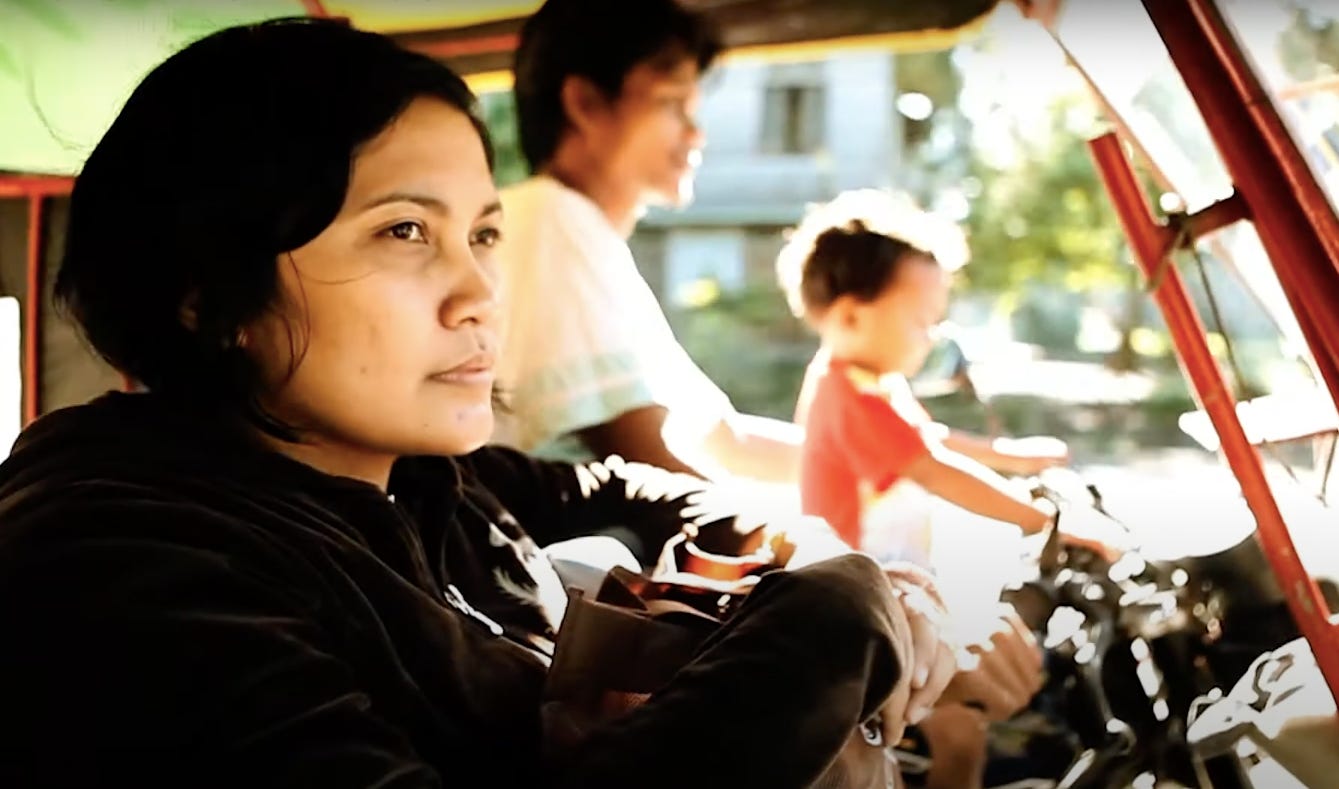
In Sherbien Dacalanio’s Ang Pagbabalik ng Bituin (2012), a domestic help working in Manila travels back and forth to her hometown in Cabadbaran, Agusan del Norte in Mindanao via the RORO (roll-on-roll-off) transport system bringing with her pirated DVDs and establishing a mini-movie house with her neighbors as patrons.
As much as it is about the titular Estrella’s (Spanish for star) “business venture” which opens discussions on film piracy, access and distribution, this fascinating documentary also presents an example of liminality brought about by labor precarity and increased mobility.
Mindanao documentaries have the narrative tradition of reconnecting with one’s identity and home, interrogating personal and national histories, as in Adjani Arumpac’s War is A Tender Thing (2013), which looks at the Mindanao conflict through the lens of her parents’ separation. There is also Nawruz Paguidopon’s God BLISS Our Home (2017), which chronicles his return home to Cagayan de Oro after years of working in Manila.
But reconnecting with this rootedness of a home also poses its own conundrums. Documenting the reunion of an indigenous family in Migkahi si Ame Tey, Uli ki Pad (Father Said, Let Us Return Home, 2014), Nef Luczon inquires: “Yet this very dilemma of which home, to the ancestral houses in Northern Luzon, or in my mother's homeland in Negros, or in Mindanao where I was born and grew up that represents 99% of my identity?”
8
The depiction of the rural through countryside landscapes and bucolic scenery signified the regional imaginary. Before regional films re-presented the rural, Filipino films, largely produced in Manila, functioned as a homogenizing portrait of the Philippines and its culture. It demarcated the center and periphery, urban and rural, what is modern and backward, dominant and inferior, known and unknown.
One of my formative experiences in going to the cinema was watching Peque Gallaga and Lore Reyes’ Shake Rattle and Roll 2 (1990). I was six when my father took me to the cinema for the first time.
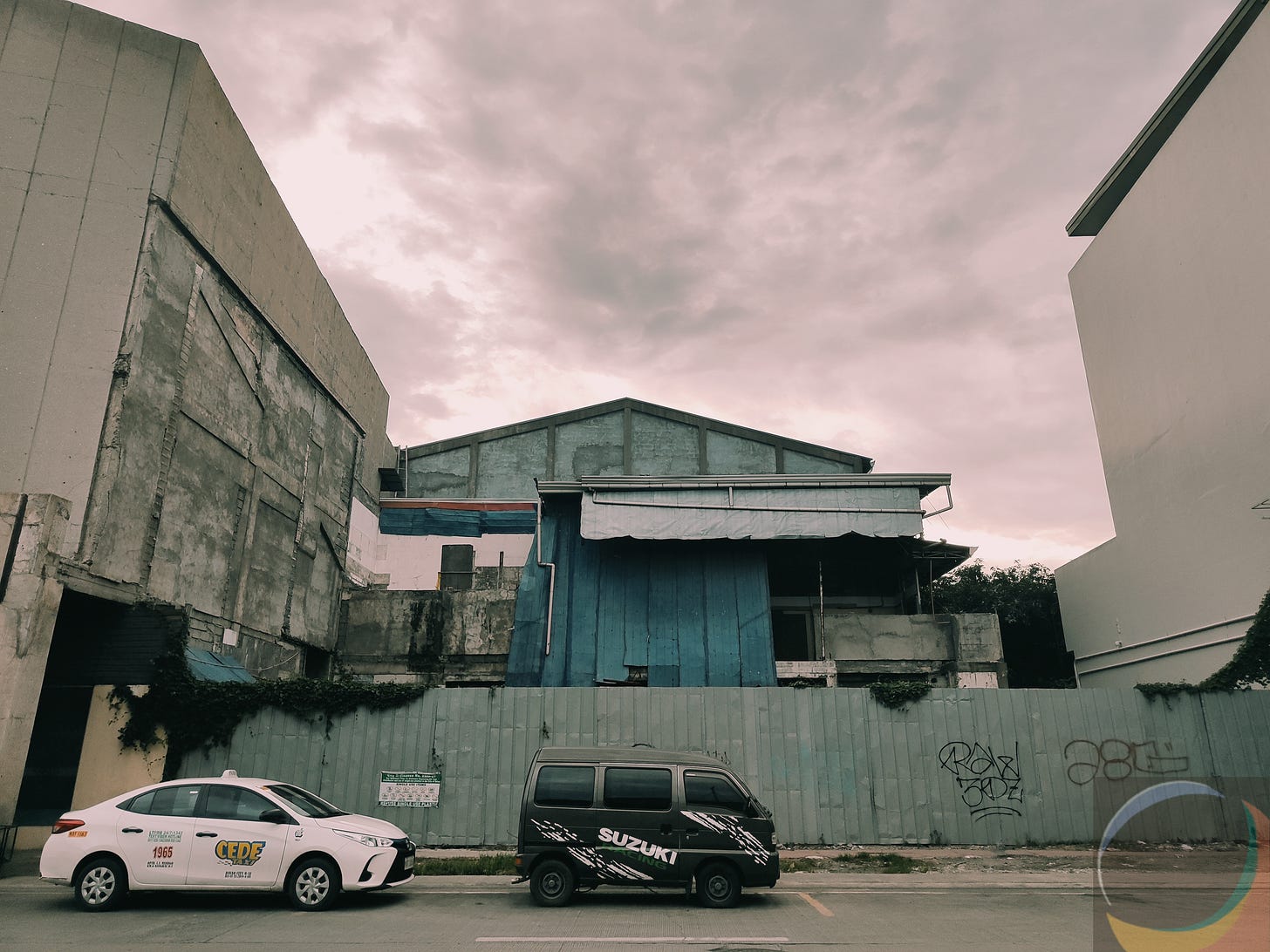
The episodic SRR series, which started in 1981, became a staple in Philippine cinema, with its constant presence in the annual Metro Manila Film Festival (MMFF). A festival that, although named after the country’s capital region, happens throughout the entire country.
In SRR 2, the final episode Aswang, is an all-time favorite and one that will stay with me even with the many iterations in both SRR and other Filipino horror films. Aswang is the word used to describe malevolent shape-shifting creatures that harm or eat humans. It has classifications or categories within a fascinatingly rich folklore, and one that also has affinities with Southeast Asian folklore narratives.
Rural meant probinsya—the province. The word probinsya is still used as an umbrella term to refer to a place outside Manila. While this continued usage is probably out of convenience, the image of rural-ness is inescapable. While a lot of Filipino horror films (and even in Gallaga’s non-horror films like the classic Oro, Plata, Mata in 1982) were set in the provinces, there was no labeling of a regional cinema.
As a kid growing up, this was how I imagined the regions to be. The place beyond the comforts of modernity, where unknown and dangerous things happen. And even if I grew up and continue to live in a city—in itself its own center in the Philippine south—this image of an ‘other’ Philippines pervaded through cinematic imagery.
9
On the image of the Bangsamoro (the Muslim Mindanao region), Mangansakan surfaces the erroneous representation of the Moro in cinema, in which the image-construction apparatus of a centralized, studio system, habituated the othering of a people and its culture, dislodging their agency and further disenfranchising them.13
One of the films he mentioned is the late Marilou Diaz Abaya’s Bagong Buwan (New Moon, 2003), which I first saw when I was 15. It was an MMFF entry that year.
I rewatched it recently and I realized I was as pitifully innocent as the kid character Francis when I first saw it. Thrown into the middle of warfare, my socio-political consciousness was shapeless, or rather informed by prevailing norms and prejudices.
The film has lofty ambitions. It was made the year after then-Philippine president Joseph Estrada, a celebrated golden-era actor, declared an all-out war in Mindanao, particularly against the separatist group Moro Islamic Liberation Front (MILF), who seeks for a more autonomous Bangsamoro region. While not a direct critique, the film as a response to the state’s war policy was mentioned in a scene by one of the supporting characters, a Christian NGO worker, while mimicking a TV report.
The Manila-province binary is evident in the way the film’s characters perceive notions of safety and conflict, particularly that of the doctor Ahmad, the film’s main protagonist, whose son’s death prompted his return to Mindanao. Manila, the city, is seen as a safe haven in contrast to the conflict-ridden Mindanao.

The perception and belief that a place as far away as Manila can be a refuge, might be an effect of Ahmad’s displacement and assimilation into the urban milieu, with its attendant conveniences, to pursue his profession, thereby uprooting him from the struggle, a fight and cause fought unceasingly by his brother, who remained with the separatist group.
The screenplay surfaces interfaith solidarity with its attempt to place Christians and Muslims together in the site of contestation, intimating a future of harmonious co-existence. (In fact, there are so-called ‘peace zones’ that highlight tri-people relations, as also seen in the short documentary Panicupan (2015) by Bagane Fiola and Keith Bacongco.)
In the film, Ahmad’s ailing mother speaks briefly of land dispute in a mythical tale she must have narrated many times in the course of a life fleeing conflict. And the Moro’s fight for freedom can be easily waylaid in the simplification of the struggle as a religious one. “You’re envious of Christians because they can achieve peace without armed struggle,” Ahmad screams at his brother.
The historical complexity and contextual heft needed to tackle the subject matter, of the Moros’ right to self-determination, can just as easily be conflated into melodrama and the spectacle of war, where choices can be either/or, and one must be declared a victor.
Yet, with its flaws, I trace Bagong Buwan as an entry point into my education and understanding of what it is living in Mindanao, and the relevance of the nexus of storytelling and image-making in the building of our history in pop culture and collective consciousness.
It is, after all, the first film about Mindanao that I saw, even when I did not relate to it before, or that it would make me later realize that I am part of the complex settler history of the south that resulted in such a displacement.
10
In 2008, aside from Gohetia’s The Thank You Girls, I saw films by Davao-born filmmakers in special screening events: Arnel Mardoquio’s Hunghong sa Yuta (Earth’s Whisper) and Sherad Anthony Sanchez’s Imburnal (Sewer).
The effect of these watches were like blips in the monotone of mainstream viewing. But it was a counter-current that will incrementally build to the exciting thrum of a new wave of alternative cinema that was on the rise.
And it is within reach, a filmmaking happening in my own environs. But it was something that I, nourished by an isolated, bootleg cinephilia of pirated DVDs of foreign films, was yet to understand.
The first time I saw a film at our local Cinematheque was in 2013 when I saw films from Binisaya, a film movement and collective that originated from Cebu. It was a program of Cebuano short films and a feature film called Kordero sa Dios (2012) by Keith Deligero.
The films wore the Bisaya language proudly, with a grit that matches the pop-punk vibe of DIY films. I came out of the screenings like a renewed Bisaya, the language suddenly sounded cool and legit, as if arisen from the ashes of ridicule and inferiority portrayed in mainstream films like Jose Javier Reyes’ Sakal, Sakali, Saklolo (2006),14 where a nanny is chastised for teaching Bisaya to a kid.
It was also in 2013 that I wrote a profile of Davao-based filmmaker Bagane Fiola for a now-defunct local arts-and-lifestyle magazine, which also doubled as a behind-the-scenes look of his first full-length film Sonata Maria (2014). It marked the first time that, tangentially, I became a part of the local filmmaking scene.
And probably—maybe not instantly—I realized that that experience became the impetus for more writing, when just as easily I could have been swayed into filmmaking instead early on.
It was not because of a necessity—I had the impression that nobody was writing about local film in Davao or Mindanao—much more highlighting the budding local film scene that time. It was more that I did not see myself behind the camera. The act of directing was daunting to me. Neither was there a necessity for Fiola and other budding filmmakers to instantly create or make sense of the distinction of a regional cinema.
Fiola, like many of his contemporaries was brought together with the production of Sanchez’s first film Huling Balyan ng Buhi (The Last Priestess of Buhi) or the Woven Stories of the Other (2006), about an ailing babaylan, a metaphor for a waning culture and a reflection on the protracted wars in Mindanao.
Sanchez’s film is considered to be the first Mindanao full-length film, more specifically in the digital era, with no proper accounting of an early Mindanao cinema or film production activities similar to Cebu in the 60s.15
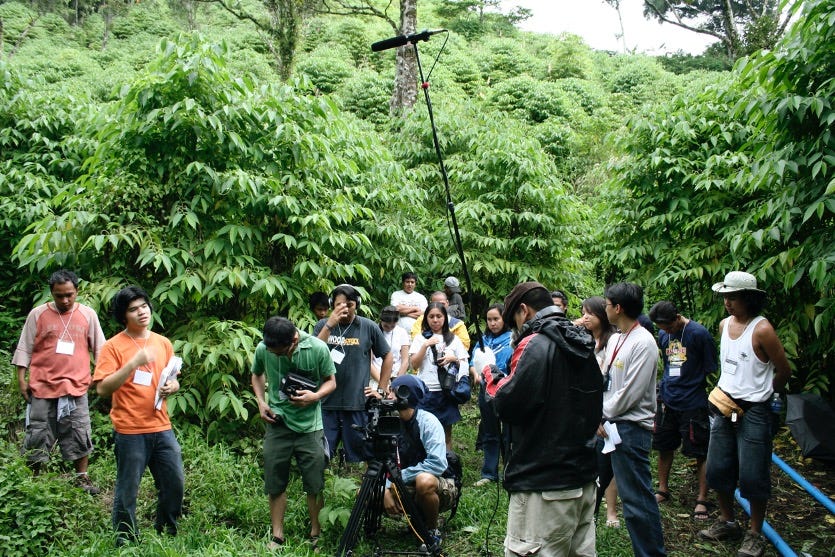
There is a photograph that is included in the Mindanao Film Archive display at the Cinematheque Davao before it was removed during the pandemic which shows Sanchez and the film’s crew amid a patch of foliage.
This coming-together is considered pivotal by Dax Cañedo, the film’s cinematographer, and who would pioneer the Mindanao Film Festival, the longest running regional film festival in the Philippines. It “brought together many film workers and talents in Mindanao to a feature film production that would, for the first time, compete in a national film festival,” he said of the film.
With digital technology purportedly liberating filmmaking, the regions birthed filmmakers who took on this wave—a movement in its infancy in the late 2000s. And perhaps this is the apt description of a cinema that emerged in the peripheries. It was more of a nudge, a ‘hey-were-here’ pronouncement, rather than a plea for legitimacy from the main flanks, nor a consciously planned inception of an industry away from the center.
11
The attempt to define regional cinema by the locus of filmmaking reaches a kind of dissolution16. With varying filmmaking practices and outputs in the regions, attempts to set parameters of distinction through curatorial strategies is at best a making-sense of an unfolding phenomenon.
Any discussion on regional cinema would be incomplete without mentioning the late film archivist and curator Teddy Co, who is celebrated as a pioneer of Cinema Rehiyon, who passed away last year. His essay In Search of a Philippine Regional Cinema, which appeared in the magazine Movement in 1987, is a seminal text exploring the country’s nascent regional cinema.
Highlighting the works of Philippine independent maverick Kidlat Tahimik, whose film practice is in Baguio City in the north, and the Visayan movie industry in Cebu, Co’s article cites alternative filmmaking practices that began redefining Philippine cinema.17 While there was no mention yet of any concrete filmmaking activity in Mindanao, Co cited the works of Davao-born Briccio Santos, who would later become head of the Film Development Council of the Philippines (2010-2016).
Many regional filmmakers have moved to Manila or other places, but their films are still informed by the realities of their erstwhile home and carry a sensibility unique, or can be easily attributed, to the region or place where they came from.
Like Sanchez, Zamboanga-born Sheron Dayoc, has also moved places and is now based in Manila, and has made films shot in Mindanao, like his award-winning film Women of the Weeping River, about inter-clan conflicts called rido.
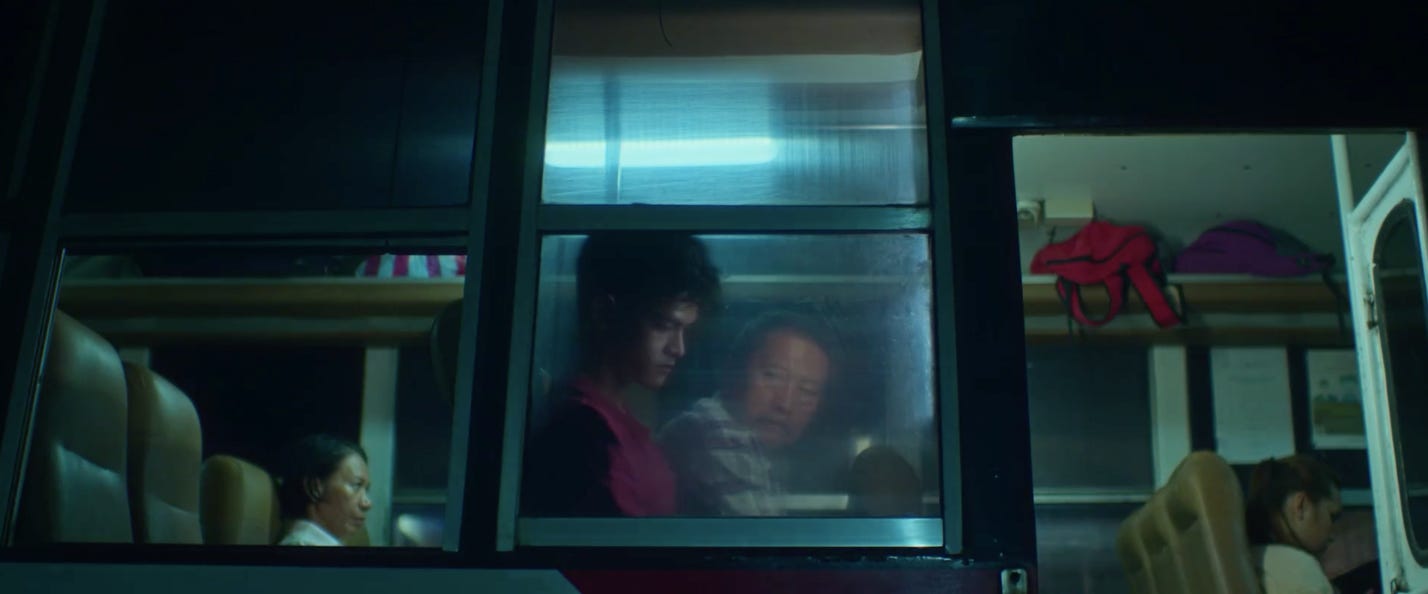
His new film called Gospel of the Beast which was shot in Iloilo is the opening film of this year’s Cinema Rehiyon, and markedly different from his Mindanao films. It features local and professional actors who speak Ilonggo. It premiered at the Tokyo International Film Festival in October 2023, and the Cinema Rehiyon screening was its first public or festival exhibition in the Philippines.
A Singapore and Philippines co-production, it is what can be called a transregional film, in both national and international context.18
The closing film, Ghosts of Kalantiaw (2023), might be another example of this transregionality. Directed by Manila-based Chuck Escasa, it is produced by his wife Aimee, also a filmmaker from Iloilo.
The film is a timely exploration of a controversial pre-Hispanic legal code that curiously traces our current post-truth conundrums to history. The specificity of the film’s subject can be argued as more regional compared to Gospel, whose depiction of violence is more universal and less anchored to place.
12
With the proposition on a “postmodern deterritorialized and pastiche approach”, can we then now look at Bagong Buwan, or the ‘Mindanao’ films of Brillante Mendoza (who is from Pampanga, a province north of Manila), constitutive of a more wide-ranging scope of regional cinema, even when it contradicts the criterion of the site of filmmaking practice?
A mainstream studio can thus make a Mindanao film with a Manila or mainstream filmmaker at the helm. But isn’t this what regional cinema and filmmaking aims to counter, what Edward Saïd might refer to as ‘imaginative geographies’?
Mindanao artist and writer Anna Miguel Cervantes offers a corrective or amelioration to the crisis of contradiction or an impasse in identity: “rather, it is more important to ask: what culture or place of origin does the filmmaker most identify with? What cultures aside from those he/she most identifies with, has the filmmaker profoundly embraced during travels, personal history, or through research?”19
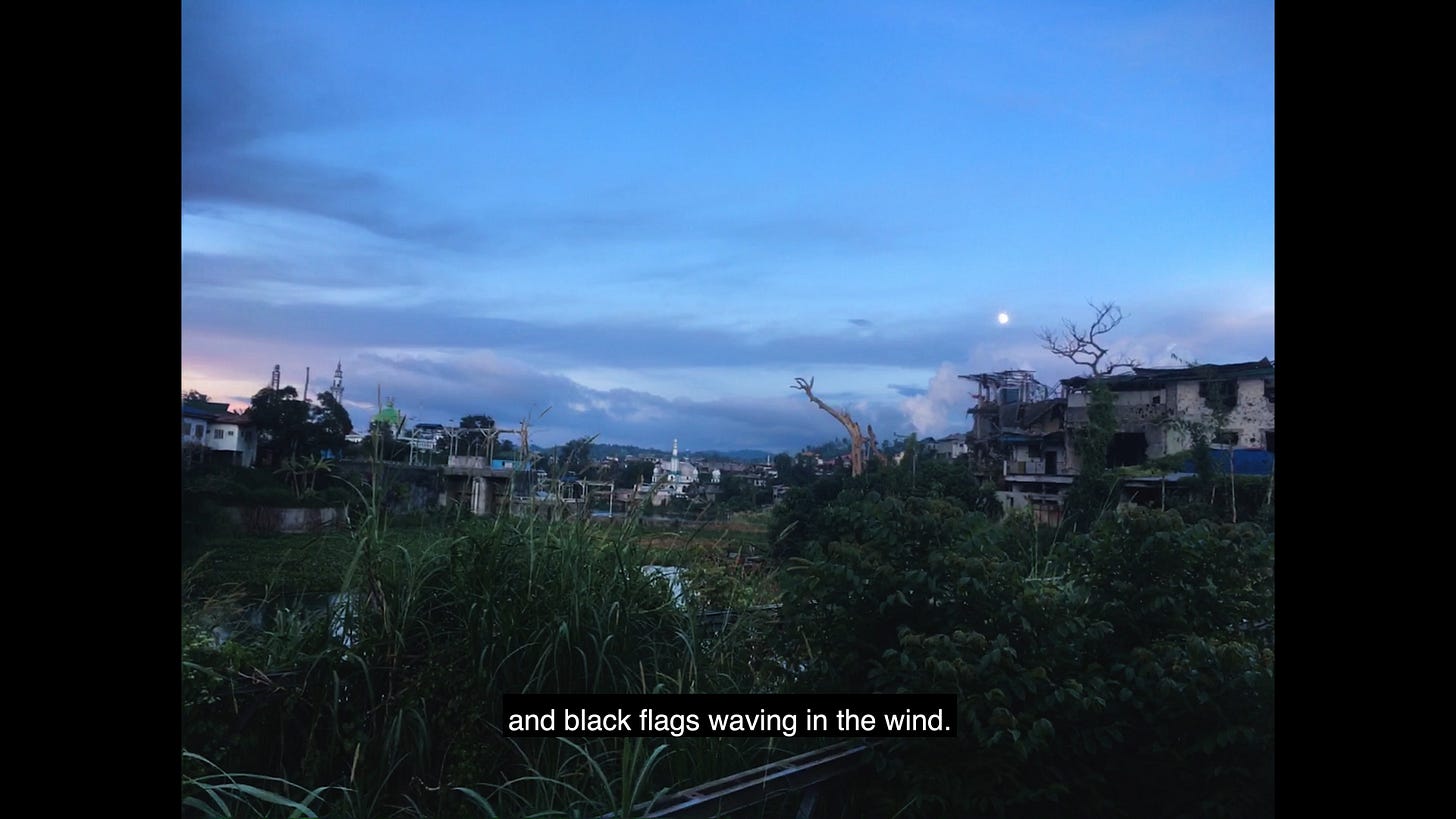
It is a question thus of engagement: how does a filmmaker engage with regional cinema? Regional cinema discourse remains to be in the purview of film scholarship and curation, which have mostly been conducted by non-regional professionals, scholars or academics since the term was coined and promoted by NCCA through Cinema Rehiyon.
The participation of regional filmmakers may not be a definitive indicator of their adherence to such a concept. I talked to some new filmmakers during this year’s Cinema Rehiyon, some of them attending the event for the first time. There is a palpable hesitation towards directly embracing the term.
There are positive perceptions—the privileges of representation and exposure—and also a space for interrogating such a label. “I am even unsure if I can call myself a filmmaker (with her first work)”, says Cherry Tattao from Tuguegarao in Central Luzon, much more electing herself as a representative of their regional cinema.
A regional filmmaker—their work, and its supposed regionality—might suddenly find themselves with a preordained consciousness, or burdened with regional distinctions.
13
There is a dearth of criticism, even cursory writing, about Cinema Rehiyon and regional cinema in general, as the project focuses more on exhibition. With its ‘traveling’ nature, and the lack of film writer-critics in regions, the loopy discourse remains within the same circles.
The concentration of film critics and reviewers in Manila would only be able to write about a regional film if such a film is included in a Manila-based film festival, which is still the prevailing practice.
Vicente Groyon’s appraisal of the first Cinema Rehiyon in 2009 pointed out these paradoxes surrounding the regional cinema discourse from its inception. More than a decade later, in a postscript to an online film forum called “Translating Cultures in Regional Cinema” for the 2022 Cinema Rehiyon, Jay Jomar Quintos re-surfaces these paradoxes of our understanding of regional cinema.20
The construction of categories—geographies, language, cultural affinities, locus of film practice—seemingly undergoes a self-annihilating process of dissolution. Groyon ends with a challenge to debate on regional cinema’s marginality which “does afford its comforts, securities, and privileges, which the marginalized may not be so willing to relinquish.”21
14
Writing in the spaces of the regions also means immersion; it requires understanding the political economy of regional cinema, the imbalance of power and distribution, that should enable structural reforms that will truly decentralize and build a sustainable local film industry.
From production to distribution, Mindanao filmmaker Arnel Mardoquio outlines in an essay policy recommendations towards this direction citing existing regional film communities and local grassroots mechanisms that will support a regional film industry.22
There are larger, more important tasks for the writer beyond the interpretive, as much as state film agencies that promote regional cinema should go beyond the celebratory and representational politics. In the development of regional cinema, the writer is not detached as an observer but contributes to the shaping and re-shaping of it.
And the writer-critic, who often also functions as programmer, is inextricably linked with the filmmaker, both occupying the social space needed to foster understanding.
In Ilonggo, the word for understand is intiende. Cagayan de Oro-born Toni Cañete, who attended Cinema Rehiyon for the first time with her first film Desilya, which is about a homecoming, picks up on the word, and offers a renewed comfort in regional cinema’s contradictions:
“Perhaps it is in this mutual understanding that we may reclaim regional cinema as not the “Other Cinema”... but rather the “One Cinema” that fins all of us, binds all of us, and embraces all of us… there is no such thing as too far.”
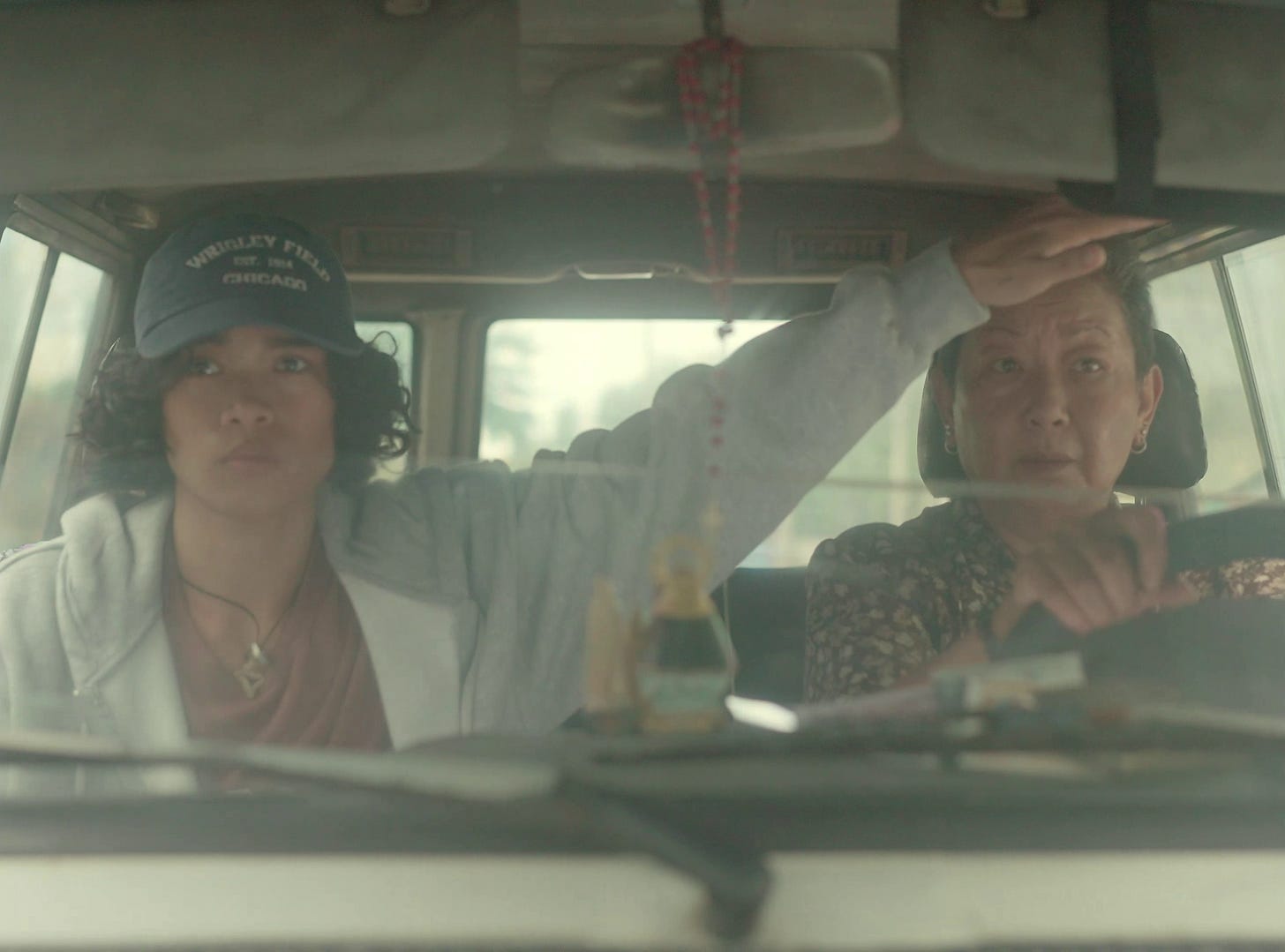
15
I wonder: how does regional cinema, or discussions on the concept, take shape in other countries? How is a definition of a regional cinema negotiated in the national cinemas of Indonesia, for instance, which is similarly archipelagic, or in India, and other countries where there are different ethnolinguistic groups? What are distinctions and nuances in Japanese cinema made in different regions or prefectures?
Storytellers is a 2013 documentary film by Sakai Ko and Ryusuke Hamaguchi. It has a simple structure; a collection of interviews of people retelling folktales of their region in Tohoku, a region devastated by an earthquake and tsunami in 2011. In a review in Asian Movie Pulse, Panos Kotzathanasis writes: “it essentially addresses a very specific audience that is doubtful if it can be found outside of Japan at all.”23
But by way of cultural exchange, Storytellers did find a way to be shown outside a Japanese audience—in General Santos City, during the 2016 edition of the Salamindanaw Asian Film Festival.
Sakai attended the festival and in a forum had this to say (translated from Japanese):
“Listening to this discussion, I realized that I myself really am a regional filmmaker… I did not go to Tohoku in order to create a piece of regional cinema… It was only after I had finished the film that people started calling it a piece of regional cinema. I have this feeling that the film emerged as a piece of regional cinema because of the conversations that surrounded it.”24
16
I was determined to let this essay be an exercise in fragmentary writing. Inspired by Brian Dillon’s Affinities, I set out to gather in one text words with affinities to regional cinema, to draw connections from a scattering of points and ideas.
The process—reading, referencing, citing, re-viewing—prompted a kind of ‘dispersal and coalescence’25 as both personal history and memory collide in an unformed and unstructured chronicle of a period in flux.
If there is a boom and bust with industries and trends, so must waves crest and crash. Are we content just riding in this wave, or are we now just waddling in the ebb of its antinomies?
What about shores that may enable new ways of re-thinking and re-imagination? A gesture towards disconnection and divergence, which leads me to what Filipino-Canadian filmmaker Isiah Medina said that struck me, and in which, I find myselfArts Equator in a juncture for new meanings, and ironically, connections:
“If everything is connected then we are back in the figure of the one, and then change is impossible. Change happens because there is a disconnection that goes uncounted. Cinema as an art-form reasserts itself when we have new negations of cinephilia, and new negations of a sort of journalistic, ‘keeping up with the times’. As soon as you’re keeping up, nothing will be transformed. You’re always late.”26
Statistics from the Philippine Overseas Employment Administration (POEA).
Specifically, Cinema Rehiyon is a flagship project under NCCA’s Cinema Committee, but is held in conjunction with the Philippine’s Arts Month in February.
I wrote about Tingog and other short films featured in this program at this year’s edition of Cinema Rehiyon here: https://www.eksentrika.com/essay-filipino-filmmakers-from-the-regions/
https://entertainment.inquirer.net/111665/nanny-beloved-from-iloilo-now-nanny-the-movie
In this video essay, I talk about four films that revolve on the provinces’ mining communities:
Ryan Lim. Missing Objects, or Feeling of Companions in Unfree Terrain. Asian Film Archive. 2023. https://asianfilmarchive.org/missing-objects-or-feeling-for-companions-in-unfree-terrain/
The regionalization of the Philippines was initiated under Presidential Decree No. 1, or the Integrated Reorganization Plan of Ferdinand Marcos, on September 24, 1972.
Tito Valiente. Notes on Criticism in the Spaces of the Region and Other Peripheries. New Durian Cinema. 2019
Patrick F. Campos. Topos, Historia, Islas: Film Islands and Regional Cinemas. JCMS 60, no. 3 (Spring 2021): 163–168.
Manuel Mogato and Karen Lema. Philippine dictator Marcos buried at heroes’ cemetery amid protests https://www.reuters.com/article/idUSKBN13D0DK/
Nick Deocampo. Archipelagic Cinema Redefines National Cinema (2000s-2020). Alternative Cinema: The Unchronicled History of Alternative Cinema in the Philippines. 2022
Founded in 2005, the annual Cinemalaya Philippine Independent Film Festival has also become a platform for regional filmmakers to gain national prominence. Mindanao filmmakers like Teng Mangansakan and Sheron Dayoc have debuted their first feature films here.
Gutierrez Mangansakan II. Representations of the Bangsa Moro in Philippine Cinema. New Durian Cinema. 2019.
https://www.philstar.com/cebu-entertainment/2007/12/30/35824/ldquosakal-sakali-saklolordquo-scene-slur-against-visayans
In Jay Jomar Quintos’ “Mindanao and Sulu Cinema as Postcolonial Critique”, he cites Mindanao studies scholar Bro. Karl Gaspar’s contention that the educational and advocacy videos of former Columban missionary Neil Frazer in Ozamiz City can be traced as nascent origins of Mindanao cinema. https://mindanews.com/mindaviews/2021/02/commentary-mindanaw-and-sulu-cinema-as-postcolonial-critique-1
Miguel Rapatan. Regional Cinema 1938-2021. CCP Encyclopedia of Philippine Art. 2020 (updated 2021)
Teddy Co. In Search of a Philippine Regional Cinema. Movement. 1987
Regionality in the context of international co-productions is an interesting dimension in regional cinema studies, with films like Carlo Manatad’s Whether The Weather is Fine (2021) and Kenneth Dagatan’s In My Mother’s Skin (2023) recent examples.
Anna Miguel Cervantes. Three Cheers, The Godhead of Ritual, Traffic Vol. 2
Jay Jomar Quintos. The Paradoxes of Regional Cinema. Mindanews. 2022. https://mindanews.com/mindaviews/2022/03/the-paradoxes-of-regional-cinema/
Vicente Groyon. Cinema Rehiyon 2009. A Reader in Philippine Film: History and Criticism Essays in Honor of Nicanor G. Tiongson. 2014
Arnel Mardoquio. Ang Mga Pampelikulang Komunidad sa Mindanao, Ang Ating Regional Cinema sa Konteksto ng Gawaing Pangkultura. Ang Mahaba’t Kagyat na Buhay ng Indie Sinema. UP Press. 2023
Panos Kotzathanasis. Documentary Review: Storytellers (2013) by Ryusuke Hamaguchi and Sakai Ko. https://asianmoviepulse.com/2022/01/documentary-review-storytellers-2013-by-ryusuke-hamaguchi-and-sakai-ko/
An excerpt from the transcript of Film Criticism and the Region of Cinema during the 2016 Salamindanaw Asian Film Festival in which I documented, published as part of the Film Criticism Collective by the Yamagata International Documentary Film Festival.
“...I can’t prove it yet – that the venerable genre of the essay has something to do with the future, with a sense of constant dispersal and coalescence.” Brian Dillon. Essayism. Fitzcarraldo Edition. 2017
Isiah Medina. Towards a Theory of Film Production, Part 1. Quantity Cinema. 2021. https://quantitycinema.com/2021/12/06/towards-a-theory-of-film-production



